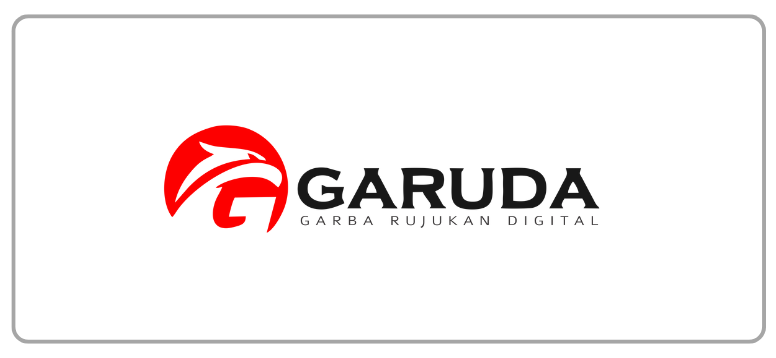Effective Advertising Location in the Commuter Line: Study Cases in Jakarta and Surrounded Cities in Indonesia
DOI:
https://doi.org/10.21512/tw.v21i1.6242Keywords:
effective advertising, transit advertising, advertising location, commuter lineAbstract
The aims of the research were to determine the most effective advertising location compared to various available locations and to examine the behavior of commuter line passengers. The research was conducted at six train stations and samples were taken by a purposive sampling method. Data were collected by a structured interview. The Chi-square test was used to find out the differences of the advertising locations’ effectiveness, while a ranking method was used to determine the effectiveness of advertising locations. Eight locations were rated by passengers. The results reveal that the effectiveness of each location on the commuter line has proven to be different and the most effective advertising location is the hanging alley.
References
Belch, G. E., & Belch, M. A. (2012). Advertising and promotion: An integrated marketing communication perspective. New York: McGraw-Hill Irwin.
Cannon, H. M. (2012). Media analysis and decision making. Advertising Theory, 313-336.
Chan, K. W., & Fung, M. S. K. (2013). Effectiveness of subway advertising in Hong Kong. Journalism and Mass Communication, 3(12), 757–767.
Commuter Jabodetabek. (2017). Sekilas PT. KAI Commuter Jabodetabek. Retrieved March 20th 2017 from http://www.krl.co.id.
Giri, A. V. (2016). Effectiveness of the advertising process. Australian Journal of Sustainable Business and Society, 2(1).
Grigaliūnaitė, V. & Pilelienė, L. (2016a). Making Brand Visible: Advertising Elements Influencing Visual Attention to the Brand. 1(1), 80–89.
Grigaliūnaitė, V. & Pilelienė, L. (2016b). Emotional or rational? The determination of the influence of advertising appeal on advertising effectiveness. Scientific Annals of Economics and Business, 63(3), 391-414.
Grigaliūnaitė, V., Pilelienė, L., & Bakanauskas, A. P. (2016). The analysis of the influence of internal factors on outdoor advertising effectiveness. Research for Rural Development, 2, 166-173.
Gurumoorthy, P. (2015). A study about out of home advertising. International Conference on Inter Disciplinary Research in Engineering and Technology, 1, 92-98.
Higgins, E., Leinenger, M., & Rayner, K. (2014). Eye movements when viewing advertisements. Frontiers in Psychology, 5, 210.
Khan, K., Karamatullah Hussainy, S., Khan, A., & Khan, H. (2016). Billboard Advertising and Customer Attention: A Pakistani Perspective. International Journal of Scientific and Research Publications, 6(3), 502. www.ijsrp.org.
Makienko, I. (2012). Effective frequency estimates in local media planning practice. Journal of Targeting, Measurement and Analysis for Marketing, 20, 57-65.
Mehta, A., & Purvis, S. C. (2006). Reconsidering recall and emotion in advertising. Journal of Advertising Research, 46(1), 49–56. https://doi.org/10.2501/S0021849906060065
Morissan. (2015). Periklanan Komunikasi Pemasaran Terpadu. Jakarta: Prenada Media Group.
Musonera, E., & Karuranga, E. (2011). Investigating the level of ’opportunity to see’: A case of advertisements on the roadside light emitting diode video screens. September.
Roux, A. T., & van der Waldt, D. L. R. (2014). Out-of-home advertising media: theoretical and industry perspectives. Communitas, 19(1), 95-115.
Roux, A. T. (2016). Practitioners’ view of the role of OOH advertising media in IMC campaigns. Management: Journal of Contemporary Management Issues, 21(2), 181-205.
Turley, L. W., & Shannon, J. R. (2000). The impact and effectiveness of advertisements in a sports arena. Journal of Services Marketing, 14(4), 323 – 336. https://doi.org/10.1108/08876040010334547
Veloutsou, C., & O’Donnell, C. (2005). Exploring the effectiveness of taxis as an advertising medium. International Journal of Advertising, 24(2), 217-239. https://doi.org/10.1080/02650487.2005.11072915
Wilson, R. T., Baack, D. W., & Till, B. D. (2015). Creativity, attention and the memory for brands: An outdoor advertising field study. International Journal of Advertising, 34(2), 232–261. https://doi.org/10.1080/02650487.2014.996117
Wilson, R. T., & Casper, J. (2016). The role of location and visual saliency in capturing attention to outdoor advertising: How location attributes increase the likelihood for a driver to notice a billboard ad. Journal of Advertising Research, 56(3), 259–273. https://doi.org/10.2501/JAR-2016-020.
Wilson, R. T., & Suh, T. (2018). Advertising to the masses: the effects of crowding on the attention to place-based advertising. International Journal of Advertising, 37(3), 402–420. https://doi.org/10.1080/02650487.2017.1331967
Wulandari, D. (2016). Saingi TV, tingkat konsumsi media luar ruang capai 81%. Retrieved March 20th 2017 from https://mix.co.id/marcomm/brand-communication/media/saingi-tv-tingkat-konsumsi-media-luar-ruang-capai-81/
Downloads
Published
How to Cite
Issue
Section
License
Authors who publish with this journal agree to the following terms:
a. Authors retain copyright and grant the journal right of first publication with the work simultaneously licensed under a Creative Commons Attribution License - Share Alike that allows others to share the work with an acknowledgment of the work's authorship and initial publication in this journal.
b. Authors are able to enter into separate, additional contractual arrangements for the non-exclusive distribution of the journal's published version of the work (e.g., post it to an institutional repository or publish it in a book), with an acknowledgment of its initial publication in this journal.
c. Authors are permitted and encouraged to post their work online (e.g., in institutional repositories or on their website) prior to and during the submission process, as it can lead to productive exchanges, as well as earlier and greater citation of published work.
USER RIGHTS
All articles published Open Access will be immediately and permanently free for everyone to read and download. We are continuously working with our author communities to select the best choice of license options, currently being defined for this journal as follows: Creative Commons Attribution-Share Alike (CC BY-SA)

















